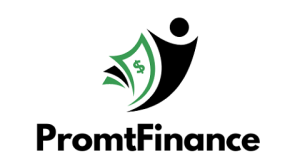A lot of freelancers start their businesses as resellers. The risk is small, and the chance for lucrative profit is enormous.
Today’s reliance on technology in every aspect of our lives and businesses continues to grow. As a result, the information technology (IT) industry continues to expand, providing numerous opportunities for aspiring entrepreneurs. One such opportunity lies in becoming an IT reseller—a business that purchases IT products or services from a manufacturer, distributor, or service provider and then sells them to customers. This article provides a detailed guide on how to become an IT reseller.
What is an IT reseller?
An IT reseller is a business that purchases information technology (IT) products or services from a manufacturer, distributor, or service provider and then sells them to customers. These can include hardware like computers, servers, and networking equipment, as well as software applications and services like cloud computing, cybersecurity, and IT support services.

IT resellers are essential to the IT products and services distribution chain. They often provide value-added services to their customers, such as consulting, installation, technical support, and training, to enhance the use and adoption of their IT products or services. In addition, some resellers may specialize in specific areas of IT, such as data storage, network security, or business software applications.
In addition to selling products and services, IT resellers may offer customers leasing or financing options. This can make technology acquisition more affordable and manageable for small and medium-sized businesses (SMBs) that may not have large capital budgets.
Many IT resellers work closely with the manufacturers or service providers whose products they sell. They may be part of a formal partner program, which often includes benefits such as training, marketing support, and access to specialized technical resources. In return, the reseller represents the manufacturer’s or service provider’s brand in their local market and helps to increase sales and market share.
How to Become an IT Reseller?
To become an IT reseller, you must choose the right products to resell with a proper profit margin and establish the company. Usually, you do not need any special license. However, some partner reseller programs have a strict credit line that is required or special certification for your staff.
Initially, it would help if you worked with smaller brands and partners that do not want any special requirements. For example, suppose you want to start an IT reseller business. In that case, you can not cooperate with Apple in the first few years because Authorised Apple Resellers are expected to have a minimum turnover of $30,000 of Apple products per quarter.
Let us analyze the significant characteristics of the IT reseller business.
Understanding the Business
Before jumping in, it’s vital to understand what being an IT reseller involves. IT resellers sell various IT products and services, including hardware (such as computers, servers, and networking equipment), software, and services (like cloud computing, cybersecurity, and IT support services). Additionally, many IT resellers provide value-added services like consulting, installation, technical support, and training.
Market Research and Identifying Your Niche
To begin, conduct thorough market research to understand the IT landscape in your region and beyond. This includes understanding the most sought-after products, potential customer bases, competitors, pricing structures, etc. Once you have a solid understanding of the market, identify your niche. Specializing in a specific area, like data storage, network security, or business software applications, can help you stand out and be successful.
Establishing Vendor Relationships
Once you’ve decided on your niche, it’s time to establish relationships with vendors. This often involves joining a formal partner program. Partner programs typically offer numerous benefits, such as training, marketing support, and access to specialized technical resources. These relationships are crucial, providing you with the products or services you’ll sell.
Business Registration and Legal Considerations
To become an IT reseller, you must formally set up your business. This includes choosing a business structure (like a sole proprietorship, partnership, or corporation), registering your business with the appropriate governmental bodies, and obtaining required licenses or permits. Legal advice can be valuable to ensure all requirements are met during this process.
Developing a Business Plan
A comprehensive business plan, including an IT reselling business, is crucial. This plan should outline your business objectives, market analysis, marketing and sales strategies, and financial projections. It will also serve as your roadmap and be crucial if you’re seeking financing for your business.
Investment and Financing
Setting up an IT reselling business requires Investment. You’ll need to budget for purchasing initial inventory, leasing or buying a physical location (if necessary), marketing, hiring staff (if required), and other operating expenses. Depending on your financial situation, you may consider self-financing, loans, or investors.
Building a Brand and Marketing Strategy
Establishing a solid brand and marketing strategy is critical to attracting and retaining customers. Your brand should reflect your business values and the unique value proposition you offer to your customers. Once your brand is established, a strong marketing strategy can help increase your visibility and attract customers.
Providing Excellent Customer Service
Finally, providing excellent customer service is critical to success as an IT reseller. This includes selling products and providing value-added services such as consulting, installation, technical support, and training. Building solid relationships with your customers and supporting them in their IT needs will encourage customer loyalty and repeat business.
IT Reseller Business Example – $10K Investment
Step 1: Conduct Market Research ($500)
Invest some of your budget in market research. Identify trends in IT needs within your local business community and determine the most profitable niches. This could include subscriptions to relevant industry publications, purchasing market research reports, or conducting surveys. Make sure to set aside some money for this critical step.
Step 2: Business Registration and Setup ($500)
Depending on your country and local regulations, fees may be associated with setting up your business. These include registering your business name, incorporating your business, obtaining necessary licenses or permits, and more. Be sure to budget for these expenses.
Step 3: Establishing Vendor Relationships (Minimal Cost)
Many IT vendors have partner programs that are free to join, though some may have initial costs or ongoing fees. Research potential vendors within your chosen niche and apply to join their partner programs. You may select vendors that offer good support for resellers, including training and marketing resources.
Step 4: Purchasing Initial Inventory ($5,000)
You will need to purchase some initial inventory for your IT reselling business. The cost will depend greatly on what you’re selling. For example, the initial costs might be low if you sell software or cloud services. However, if you’re reselling hardware, this can be more substantial. With a budget of $10,000, you might want to focus on products or services with lower initial costs.
Step 5: Develop a Website and Online Presence ($2,000)
A professional-looking website and online presence are crucial in the IT industry. You might want to hire a professional to help create your website. Additionally, consider budgeting for online ads and social media management tools to help boost your online visibility. Remember that ongoing costs like website hosting and domain registration must also be factored into your budget.
Step 6: Marketing and Promotion ($1,500)
Set aside a portion of your budget for marketing and promotion. This could include print advertisements, digital marketing, direct mail, trade shows, and more. Be creative and consider ways to get the most bang for your buck. For example, hosting a webinar or informational session about a trending IT topic could draw potential customers and cost less than traditional advertising methods.
Step 7: Operating Expenses ($500)
Don’t forget to budget for ongoing operating expenses. These include utilities, internet, phone service, and software subscriptions for managing your business.
Remember, these numbers are all estimates, and the actual costs can vary depending on many factors. Nevertheless, this should serve as a guide to help you start thinking about how to allocate your initial Investment. The most important thing is to plan carefully, research, and ensure you’re spending your money in the most effective way possible to help your new business succeed.
Conclusion
Becoming an IT reseller can be profitable in our increasingly technology-driven world. You can create a successful IT reselling business by understanding the market, establishing strong vendor relationships, creating a comprehensive business plan, and providing excellent customer service. However, any entrepreneurial venture requires planning, Investment, and hard work.
Please see our related reseller articles:
How to Become a Sony Reseller?
How to Become a Cisco Reseller?
How To Become an Apple Reseller?
How To Become an Amazon Reseller?
How to Become a Dell Reseller?
How to Become a Software Reseller?
How to Become an Authorized Swarovski Reseller?
